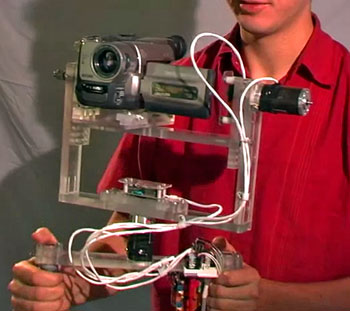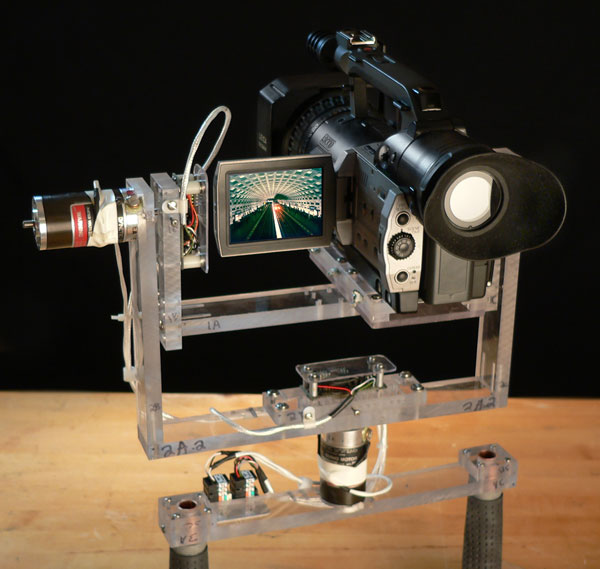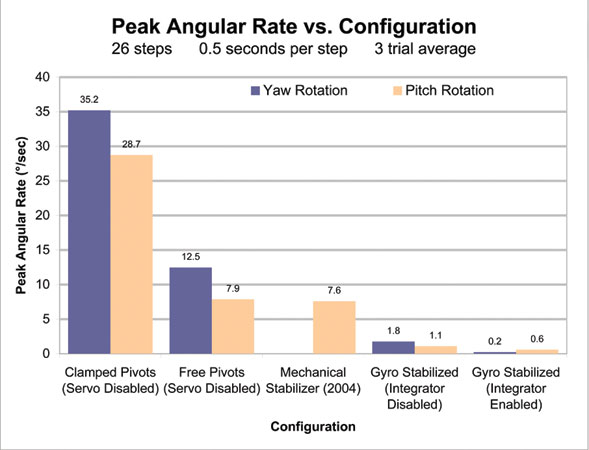Q&A with Adam Sidman, inventor of a unique, gyro-based, camera stabilizing rig
posted Tuesday, April 23, 2013 at 3:48 PM EST

Earlier this month, photographers and cinematographers got pretty excited about a new "game changer" device unveiled by Freefly Systems: a virtually unshakeable, gyro-based handheld camera stabilizer called MoVI. But once the dust (and hype) had settled on that announcement, some potential MoVi customers began having second thoughts about the stabilizer's head-turning, $15,000 price tag.
Wasn't there a way to offer the same gyro-based camera stabilizing technology for less money? It turns out there might already be just such a device, and it was invented way back in 2005. Described as a "handheld, multi-axis camera stabilization device utilizing MEMS gyro sensors (stabilizer)," by its inventor Adam Sidman, the device looks like a stripped down version of MoVi. (You can see it in action in a video clip here.)
We recently interviewed Sidman about his device and found out a little more about how it works and his plans for it.
Imaging Resource: Your invention looks very similar to the MoVi camera stabilizer. Are the two products related at all?
Adam Sidman: I have no relationship with the MoVi or Freefly Systems and, in fact, only recently learned about them.
The rig that I invented in 2005 and patented was surprisingly effective at stabilizing. I approached the age-old camera stabilization at a unique time when the sensor/servo technology was ripe to be applied to a low-cost, accurate camera stabilization. While my rig was built with a two axis gimble, the patent covers three or more axes as well as other features like translational stabilization, introducing controlled wobble and shake, and panning and tilting.
IR: What's the current status of your invention?
AS: I have been granted two U.S. Patents on this technology and am hashing out licensing the technology.
IR: Can it also be used with a DSLR?
AS: A DSLR is ideal. The rig is adjustable to support a variety of cameras from a GoPro to a Red or even larger. The technology certainly covers a variety of payload shapes and sizes. I originally designed it for the Panasonic DVX100.
IR: If it was ever brought to market, what do you think the price would be? If it's not possible to answer that directly at this point, do you think it would be a less expensive than the MoVi, which will sell for $15,000?
AS: It is too early to answer this question. I hope to be able to serve a variety of filmmakers.

IR: What do you think is the future for this type of stabilizer rig?
AS: The goal of stabilization, in my opinion, is to make it as transparent to the operator as possible. A stabilizer should be as user friendly as picking up a bare camcorder and pointing and shooting. That was my goal when I developed my rig.
